Marketing for Manufacturers Forum at
Where Business and Manufacturing Meet Strategy
Monday, April 24
9–9:15 a.m. Welcome and opening remarks
9:15–10:15 a.m.
 Business intelligence—How to dissect a market opportunity
Business intelligence—How to dissect a market opportunity
Gordon Nameni, Ph.D, senior editor, BCC Research LLC
How does your business determine the “addressable market” for its products? What is the difference between top-down and bottom-up market analysis? What are the key points of focus as you formulate your market strategy? How can you develop market adjacencies at the front of your new product development/market entry initiatives? This talk will introduce effective market analysis techniques and new concepts in strategic marketing frameworks that can uncover and accelerate the progress towards new opportunities.
10:30–11:45 a.m.
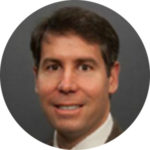 Growth in the Glass Age—Managing product introductions
Growth in the Glass Age—Managing product introductions
Kevin T. Gahagan, senior manager, technology strategy, Corning Incorporated
The glass and ceramics industry is uniquely positioned to solve some of the difficult challenges currently faced in information technology, architecture, transportation, and other industries. Opportunities are driven by new capabilities, new problems, new applications, or a combination of these. Achieving those opportunities requires a rapid assessment and deeper understanding of the portfolio. Tools to guide innovation and real world case studies from recent product introductions will be discussed.
Céline Guermeur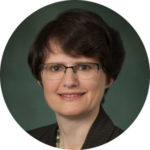 , director, exploratory markets and technologies, Corning Incorporated
, director, exploratory markets and technologies, Corning Incorporated
The glass and ceramics industry is uniquely positioned to solve some of the difficult challenges currently faced in information technology, architecture, transportation, and other industries. Opportunities are driven by new capabilities, new problems, new applications, or a combination of these. Achieving those opportunities requires a rapid assessment and deeper understanding of the portfolio. Tools to guide innovation and real world case studies from recent product introductions will be discussed.
11:45 a.m.–1 p.m. Lunch
1–2:30 p.m.
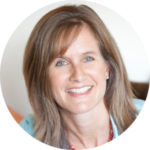 Smart marketing for engineers
Smart marketing for engineers
Rebecca Geier, CEO and co-founder, TREW Marketing
Ceramic company business leaders across disciplines often question what the best marketing investment is for their company. Redesign the website? Attend the same trade shows, or try new ones? Start an AdWords or LinkedIn ad campaign? When you add in new marketing terms—from content marketing to inbound marketing—it is even more difficult to understand the language. Finally, while there are many viable marketing investment options, all have different measures of ROI and varying degrees of effectiveness for skeptical, technical audiences. Attendees will hear answers to these and other common marketing challenges, while learning about new data and best marketing practices for marketing to highly technical audiences.
2:30–3:00 p.m.
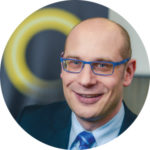 Case study: Marketing new technology—Additive manufacturing for ceramic materials
Case study: Marketing new technology—Additive manufacturing for ceramic materials
Johannes Homa, CEO and co-founder, Lithoz
With their ability to produce functional parts directly from CAD data, additive manufacturing (AM) technologies offer enormous potential for industry. The ultimate advantage of AM over traditional manufacturing methods is the freedom of design; it is possible to introduce new features in the design of parts without limitations of conventional forming techniques. While these kinds of technologies have already been established in plastics processing and metalworking over the last decade, their use for fabricating ceramic materials is still in its infancy.
Attendees will gain insight into how a new technology can be brought to market. This session will focus on opportunities, difficulties, and hurdles when marketing an upcoming technology. The pros and cons of conducting business in a hyped-up industry and how to take advantage of this will be explored, along with the question of which marketing instruments are the most effective for pioneering technologies.
3–3:30 p.m.

Case study: How to address multidirectional industry segments through strategic marketing
Alexander Frenzl, business field manager, glass, ceramics and building materials, NETZSCH-Gerätebau GmbH
4–5 p.m.
 Develop your marketing action plan
Develop your marketing action plan
Rebecca Geier, CEO and co-founder, TREW Marketing
This interactive break-out session enables attendees to get a jump start on creating a marketing action plan for their company and products. Rebecca Geier guides participants through the process of using TREW Marketing’s “Customized Marketing Action Plan Worksheet” and how to start putting the concepts, principles, and techniques discussed during the Ceramic Business and Leadership Summit into action.
7–9 p.m. CBLS dinner and speakers
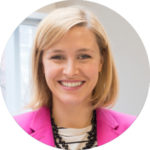 Parsing out Palissy: Recent findings on ceramic glazes in Renaissance France
Parsing out Palissy: Recent findings on ceramic glazes in Renaissance France
Colleen Snyder, associate conservator of objects, The Cleveland Museum of Art
Bernard Palissy, a master of French Renaissance ceramics, was well known for ‘rustiques figulines’ (rustic ceramics): terracotta tableware compositions including life-cast animals like frogs, snakes, and fish. However, it was Palissy’s development of a palette of Pb silicate glazes, containing transition metal colorants, which made his work exceptional for that era by producing vivid and naturalistic colors. Nearly 100 rustique figuline objects can be found in museums within the United States and Europe, including eleven at the Cleveland Museum of Art. Yet Palissy, who had many followers adopting his working methods, did not sign his works, and until recently there has been no reliable method of attributing them other than stylistically.
One of Palissy’s workshops was located in the Jardin des Tuileries, next to the Louvre Palace, where he worked from 1565 until 1572. Palissy died in 1590 after he was taken to the Bastille, and the kiln was buried shortly after. An excavation in 1984 associated with the building of the I.M. Pei Pyramid entrance to the Louvre Museum resulted in the rediscovery of Palissy’s workshop. Not only did the excavated materials, such as plaster molds of animals, reignite interest in this important art historical figure, but it also provided important data related to Palissy’s materials and working methods.
In 2009, researchers and scholars in Paris from C2RMF (Center for Research and Restoration of Museums of France), Musée du Louvre, Musée National de la Resistance, and the Laboratory of Molecular and Structural Archaeology partnered with the Cleveland Museum of Art and Case Western Reserve University to perform a comparative analysis of a group of similar objects that were attributed to Palissy. This presentation will focus on the results of non-destructive analyses of 12 rustiques figulines using PIXE and PIGE, and how that information in turn informs the curatorial narrative presented to the public within the Cleveland Museum of Art.

